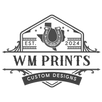Starting a 3D printing business can be an exciting and rewarding venture. However, like any business, it requires an understanding of associated costs and thoughtful planning to ensure successful operations. Whether you're interested in producing large-scale prints or offering detailed, specialized products, having a financial roadmap is essential. This blog post will explore the various costs involved in launching your 3D printing business and suggest ways to optimize initial expenditures.
Initial Investment in Equipment
The most significant upfront cost for a 3D printing business is the equipment itself. Choosing the right 3D printer is a critical step, as it influences the quality and capacity of your business. Here are some key factors to consider:
- Type of 3D Printer: Whether you choose FDM, SLA, or SLS, each comes with different price tags and operational capabilities. Assess the type of material you'll use and the precision required for your products.
- Additional Tools and Accessories: Apart from the 3D printer, you'll also need to invest in various tools for post-processing your prints. For instance, the Lyman Type Prep Tools Holder from WM Prints can help you keep important tools organized and accessible, optimizing your workflow efficiently.
Material Costs
The cost of materials is a continuous expense. The choice of filament, resin, or powder impacts not only the product quality but also your profit margins. High-quality materials ensure durability and reliability, but they come at a higher price. It's essential to strike a balance between cost and quality to meet customer expectations while maintaining profitability.
Operational Costs
Running a 3D printing business incurs regular operational expenses. These include:
- Utilities and Maintenance: 3D printers require electricity, and regular maintenance ensures they function smoothly. Predict your utility bill based on printer use and factor in costs for repair and part replacement.
- Software Licenses: Design and slicing software is vital to the industry. While some programs offer free versions, professional-grade software could require a subscription, adding to your monthly or yearly costs.
Marketing and Sales Strategy
To attract customers, invest in marketing and developing a strong online presence. Although this is less tangible than other costs, it's crucial for scaling your business and generating revenue. Consider SEO strategies, engaging website content, and active social media profiles to reach potential customers.
Conclusion
Starting a 3D printing business entails various costs, from purchasing equipment to managing daily operations. Planning your finances carefully, investing in quality products like the Lyman Type Prep Tools Holder, and strategizing effectively will put you in a strong position to succeed.
For further insights and products tailored to help you in your 3D printing endeavors, visit WM Prints and take the first step towards a successful 3D printing business.





